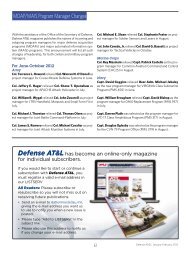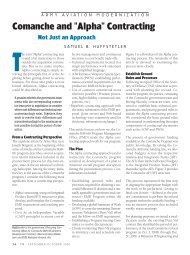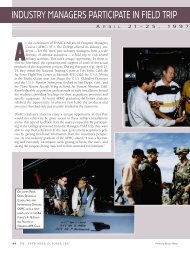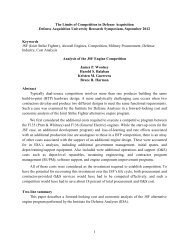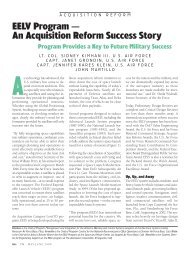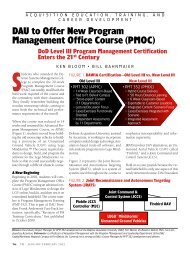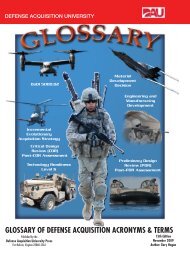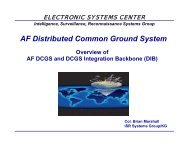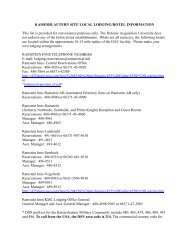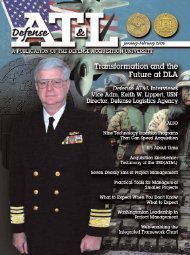Defense ARJ - Defense Acquisition University
Defense ARJ - Defense Acquisition University
Defense ARJ - Defense Acquisition University
You also want an ePaper? Increase the reach of your titles
YUMPU automatically turns print PDFs into web optimized ePapers that Google loves.
<strong>Defense</strong> <strong>Acquisition</strong> Review Journal<br />
contractor’s performance. The contractor’s performance is measured by four metrics:<br />
Engine Availability, Durability, Cost, and Small Business Participation. In each<br />
program year, the amount of the fee pool and the weights assigned to the four incentive<br />
metrics are determined based on the events of the particular program year. These<br />
metrics are considered to be of key importance in achieving the overall performance<br />
goal, which is to improve the mean time between depot return (MTBDR) from the<br />
current 700 hours to 1,400 hours at a reasonable cost by the end of PY 3.<br />
In each program year, the contractor will be challenged to exceed the government<br />
threshold. If contractor performance is considered satisfactory, the contractor will not<br />
receive any incentive fee. In other words, incentive fee is only paid for exceeding the<br />
threshold/satisfactory performance level.<br />
This incentive approach is tied directly to the metrics creating a strong link to<br />
favorable outcomes. Additionally, incentive funds not earned for a period may remain<br />
in the incentive fee pool as rollover. The program office is judiciously using the<br />
rollover incentive funds and realizes that the contractor still has to earn all incentive<br />
fee payouts.<br />
As can be seen, this incentive strategy is a highly leveraged construct that requires<br />
the achievement of many goals designed to enable the contractor to reach the<br />
overall performance goal of 1,400 hours MTBDR within specific cost objectives.<br />
Using a fixed- price contract with incentives that also allows rollover is certainly a<br />
challenging strategy for the contractor to meet, but it may be necessary to achieve<br />
success. Whether the contractor will meet cost, schedule, and performance incentive<br />
parameters is too early to tell, but the Army’s communicative and innovative approach<br />
makes success much more likely.<br />
aeronautical systeMs center (asc), f-15 aircraft suite 6<br />
softWare uPGraDe for a-e MoDels<br />
The F-15 Aero Systems Group uses a unique CPAF contract to perform this effort.<br />
While a typical CPAF contract uses only subjective criteria, the F-15 Aero Systems<br />
Group used both objective and subjective criteria as they deemed appropriate. They<br />
used government-contractor integrated process team (IPT) sessions to establish the<br />
criteria used in the award fee periods, which has been very successful. Each award fee<br />
period is tied to key deliverables and has preplanned adjustments. In the first award<br />
fee period, cost and schedule were weighted more heavily than the other criteria.<br />
Cost and schedule were each weighted at 30 percent, and program management and<br />
subcontract management were each weighted at 20 percent. The subjective evaluation<br />
144<br />
Using a fixed-price contract with incentives that also allows<br />
rollover...may be necessary to achieve success.



